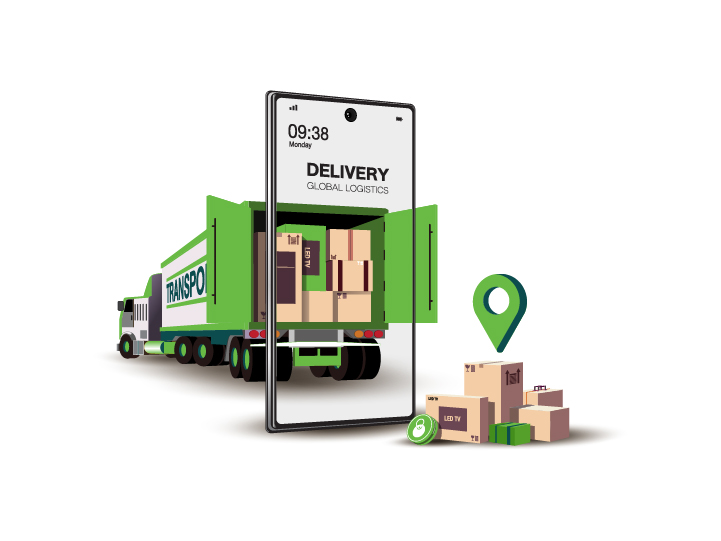How is Retail Consumer Behavior Changing in India 2024 Update
India stands out as one of the most dynamic and competitive markets globally, witnessing a profound transformation in its retail sector. A growing number of multinational corporations and industry giants are eager to establish retail outlets and manufacturing facilities in India, driven primarily by the evolving demands of Indian consumers. With a diverse and increasingly digital-savvy audience, Indian shoppers now seek more personalized, contactless, and integrated shopping experiences. To thrive in this rapidly changing landscape, retailers must adapt to these emerging trends and tailor their strategies to capture market share effectively.
Brands across the world nowadays are dealing with technological development and global cultural transformation. That’s why it’s more important than ever to analyze retail consumer behavior to sustain and adapt to the market. The future of consumer behavior is also pivoting at an unprecedented rate, and as we progress into the year 2024, brands need to possess a comprehensive understanding of the trends driving these changes.
In this blog, we will delve into the key trends shaping consumer behavior in 2024 and explore how brands can effectively adapt to these shifts. By understanding these factors, brands can better navigate the competitive landscape in India and beyond, ensuring they meet the evolving needs and expectations of their customers.

India’s retail evolution: Adapt to thrive in 2024
Rise of Digital Shopping
Today’s retail world is digital, and Indian retailers understand that it is about time they started to respond to the changing consumer interests. Digital shopping can be described as a multifaceted phenomenon resulting from the development of e-commerce, the growth of mobile commerce, the increasing impact of social networks, the transition to the omnichannel model, technological innovations, advancements in payment methods, and the penetration of the rural market. These factors together are reshaping the retail landscape, offering consumers a more convenient, personalized, and accessible shopping experience.
Hence it is essential to discuss each factor in detail to get a better understanding of how these dynamics are changing the retail industry in India, enabling retailers to better cater to the modern consumer preferences.
Shift Towards Omnichannel Retailing
Consumers today want flexibility in how they shop, purchasing their products wherever and however they please. They want a smooth combination of online and offline experiences. This has led to the soaring popularity of the omnichannel retail experience, also referred to as “phygital” shopping.
The omnichannel retail experience offers a comprehensive and linked experience across several platforms, going beyond traditional retail limits. It is a connected approach wherein customers’ shopping journey is not restricted to the online interface alone.
- Indian consumers seek a seamless experience: Indian consumer preferences lean towards a shopping experience that integrates both online and offline channels seamlessly. They might research products online and then choose to shop in-store for a tangible "touch and feel" experience before making a purchase. The retailers, who provide customers with such a smooth experience, are more capable of satisfying consumer demand.
- The value of convenience: The Indian consumer market is gradually developing the convenience as a key factor. Consumers want convenience, value for money, and its availability at their fingertips in a short period. Omnichannel retailing integrates various channels to provide a convenient shopping experience. This approach allows customers to engage with brands through their preferred channels.
- Rise of hyperlocal and community-based retailing: Hyperlocal retailing involves targeting specific, localized markets to align with retail consumer behavior. This strategy ensures that products or services are readily accessible to consumers within their immediate area. This promotes faster delivery and lower shipping costs. This trend goes hand in hand with the necessity to change the nature of retail strategies to correspond to regional preferences and to contribute to the development of local businesses.

Digital shopping's evolution: Redefining retail for India
Changing Demographics and Preferences
Generation Z and the millennials are the most influential generations that are contributing to the current trends in retail in India. Millennial and Generation Z consumers represent the first generation to grow up with widespread access to the use of digital technologies and the Internet for shopping. That is why they are ready to engage with brands in digital ecosystems that offer technology-aided personalized interactions. These consumers shop online, are heavily influenced by social media, and possess a high level of tech-savviness.
Preferences for Sustainable and Ethical Products
Sustainability and ethical considerations are increasingly shaping changing consumer interests. Gen Z and Millennials are now at the forefront of the change towards sustainable consumption and shopping. 72% of Gen-Zers value sustainability more in their second-hand shopping efforts. They are willing to pay for products made sustainably and ethically. Most people look for product reviews online while some also look up the manufacturing details. Indian consumers therefore are now more conscious and would not spend their money on anything and everything.
Maximum customers review the products before making a purchase and 9.7 percent are willing to pay a premium price for products that are sourced ethically or produced sustainably. According to research by IBM, 77% of consumers consider sustainability and environmental responsibility to be at least "moderately important" brand values.
That is why, Brands must adapt to the growing popularity of thrifting and second-hand shopping. Harvard Business School reports that sustainable products have 5.6x higher average sales growth compared to those that aren't marketed as sustainable.
Increase in Demand for Personalized Shopping Experiences
One of the most important factors that has come out is personalization. Due to the improvement in the use of data analytics and artificial intelligence, retailers can now allow personalized shopping experiences. Apart from improving the shopping experience, this level of personalization makes customers develop a more positive attitude towards the business and thus are more likely to return for other purchases.
As personalization continues to be a dominant trend, with consumer preferences leaning towards tailored experiences, retailers will be compelled to adopt the necessary technologies and strategies to meet these demands.
.jpg)
Influence of Technology and Innovation
In 2024, Artificial intelligence and Machine Learning are the two predominant technologies that are being used to transform the retail industry in India. These technologies are being used by retailers to develop environments that are responsive to consumer preferences. With AI recommendation retailers are offering products relevant to individual customers based on their previous purchase, browsing history, and social media profile. Such a level of customization not only helps in improving customer satisfaction but also drives conversion rate and overall sales.
AI can also be applied to enhance forecasting in various aspects of the supply chain, including inventory management, demand prediction, and supply planning. Since demand is more accurately predicted, stockout and overstock are eliminated. Additionally, the application of AI in chatbots and virtual assistants in customer care service offers instant and round-the-clock service.
Adoption of AR/VR for virtual try-ons and immersive shopping.
As the boundaries between the physical and digital worlds become increasingly blurred, a new era of digital and augmented experiences is emerging fast. Innovations in AR and VR are not only driving technological advancements but are also shaping the future of customer behavior in retail stores. AR and VR technologies delivered a $1.4 trillion boost to the global economy in 2023.
By enabling consumers to see and interact in a virtual setting, these immersive technologies provide an unmatched degree of engagement. AR and VR are closing the gap between the physical and digital worlds.
Use of data analytics to understand and predict consumer behavior.
Data analytics is an important tool in helping decode consumer behavior in retail businesses and predict consumer trends. 66% of consumers expect brands to understand their needs and preferences, and create customer experience journeys accordingly. That is why, in India, more and more retailers are investing in sophisticated analytics to understand customer preferences, behavior, and purchasing patterns.

AI and AR/VR: Redefining retail experiences
Payment Innovations
Digital wallets and UPI have emerged as the most popular modes of payment in India as the country moves towards becoming a less-cash economy. Digital wallets like Paytm, PhonePe, and GooglePay allow consumers to pay their bills, store their payment details, and manage their money. The Unified Payments Interface (UPI), developed by the NPCI, has been recognized and accepted across the country because of its ease of use and effectiveness.
The Buy Now, Pay Later (BNPL) solutions have also become popular in India as a substitute for traditional payment methods. This accommodates retail consumer behavior by allowing individuals to purchase goods and pay for them later in installments. BNPL services are presented by platforms such as Bajaj Finserv, LazyPay, and Simpl to help customers manage their budgets better and make significant purchases without putting pressure on their wallets.
Rural Market Penetration
The rural market has always been neglected by the retailers targeting the urban markets. But many factors such as the increase in infrastructure facilities, increase in incomes in rural regions, and easy internet availability have made the rural market attractive for all. Retailers are quite aware that this market is still unexplored, and they are now trying to formulate ways to address the consumers of rural areas. The expansion of rural markets is therefore not only a trend but a shift that has occurred.
Social media is considered instrumental in narrowing down the gap between the urban and the rural consumers. Technological advancement in the form of smartphones and the availability of cheap data charges have given residents of rural areas access to online platforms. The e-commerce companies and new-age domestic players are capitalizing on this digital invasion making products and services available according to the changing consumer interests of the niche market. The adaptation of local languages and the payment systems that suit the rural population is further strengthening this relationship.
Influence of Social Commerce
Social commerce, also known as S-commerce, has become increasingly important in today’s age of social media-active consumers. Social commerce sales are predicted to reach nearly $3 trillion by 2026.
Research indicates that nearly 326 million users worldwide will turn to social media by 2029 as their go-to shopping platform. Customers are now finding, investigating, and buying things straight from social media apps, blurring the lines between socializing and purchasing.
Owing to this, trends like social listening and influencer marketing are being adopted by retailers. Studies show that more than 35% of marketers find influencer marketing an effective strategy to generates better ROI than other marketing efforts.
- Platforms Driving Social Commerce: Social commerce is revolutionizing retail by integrating shopping directly into social media platforms like Instagram and Facebook. These are platforms incorporating shopping into their interface allowing users to search, view products, and even buy them from the same platform. These apps include purchasing mechanisms and influencer marketing in their interface.
- Consumer Trust and Peer Influence: In today's retail world, people rely on friends and social media influencers to guide their purchases. Celebrities with large followings shape trends and influence decisions, creating trust and addressing changing consumer behavior in retail business. As a result, brands are leveraging influencers to communicate their messages, enhancing both impact and effectiveness in reaching target audiences.
- Seamless Shopping Experiences: The use of shopping features within social media platforms has made shopping easier and more efficient. Some of the characteristics of this type of marketing include shoppable posts, live shopping, and even links directing consumers directly to the product pages thus eliminating any barriers to purchasing.
.jpg)
Ginesys: Empowering Retail Transformation
Ginesys stands at the forefront of retail technology, providing comprehensive solutions designed to address the dynamic needs of today’s retail environment. As a leading player in retail management software, the platform offers a suite of tools that address changing consumer interests and drive business growth.
Let's understand how Ginesys is empowering retail transformation:
- Bridges the gap between online vs. offline preferences: By integrating online and offline sales data, it enables retailers to gain a unified view of their operations and customer interactions. This holistic approach allows for seamless inventory management, accurate sales reporting, and a cohesive customer experience across all touchpoints.
- Real-time insights: With Ginesys, retailers can leverage real-time insights to optimize their strategies. Features such as omnichannel inventory synchronization, unified POS systems, and integrated CRM solutions also help bridge the gap between online and offline shopping.
- Predictive analysis: By leveraging customer data and predictive analytics, retailers can anticipate consumer's needs, tailor offerings, and enhance the overall shopping experience.
- Meet and exceed consumer expectations: The platform provides retailers with the tools needed to understand and respond to evolving consumer preferences effectively. Through advanced analytics and reporting features, retailers can gain deep insights into customer behavior, purchase patterns, and feedback.
- Personalized campaigns: The platform empowers retailers to deliver exceptional customer service by facilitating faster and more accurate transactions, personalized promotions, and targeted marketing campaigns.

Ginesys: Redefining retail with insight and innovation
This wraps up our overview of the key consumer behavior trends that retailers should monitor closely in 2024. Retail consumer behavior in India is undergoing significant transformations, driven by factors such as digital adoption, changing lifestyles, and evolving preferences. Understanding these shifts is crucial for retailers aiming to remain relevant and successful in the current landscape.
To thrive in today’s dynamic retail environment, retailers must be agile and proactive in adapting to changing consumer behaviors. For retailers looking to navigate these changes and drive their business forward, Ginesys offers a comprehensive suite of solutions designed to empower retail transformation.
Connect with us today to discover tailored solutions that can propel your business into the future.

